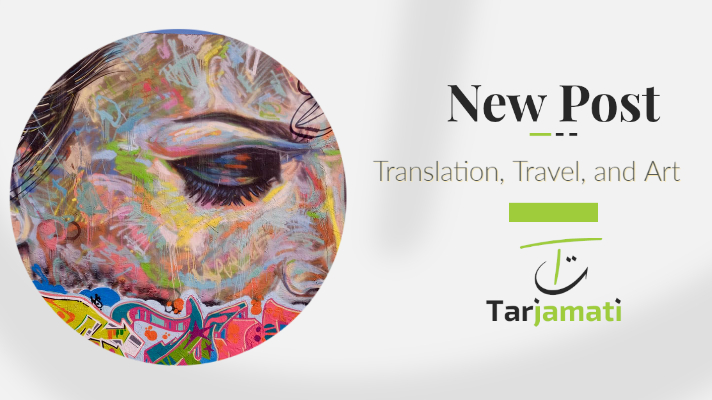Travel, Translation, and Art Astonishingly Intertwined
I think we all agree that literary translation takes us to journeys in time and place. We passionately tell our friends how it opens doors for us as we translate, taking us to other worlds, places, and cultures. But does travel itself bring you translation memories? For me, it does! It even reminds me of certain pages that took its toll on me (in a good way 😊)
For me, travel, translation, and art are astonishingly intertwined! Whether for work or tourism, I make sure to visit one or two museums when time allows. Though I’m not an art expert, I still believe that art museums can give you a “quick read” of a country’s rich history, culture, and social struggle. And in every visit, there is always a beautiful coincidence that puts a big smile on my face as I stop by a piece of art that reminds me of work!
One memorable visit that really connected with my translation experience was in 2017. I flew to Washington D.C. to attend the American Translators Association’s 58th conference and I stayed in beautiful Georgetown. After my colleague Maha Al-Bishr (whom I later named the Saudi princess) begged me to take some time off to enjoy the city, I decided to skip a session or two to visit the Smithsonian Modern Art Museum. It was just really hard to skip ATA!!

Donald Reynolds Center for American Art and Portraiture, which houses the Smithsonian American Art Museum and the National Portrait Gallery in Washington, D.C.
I’m grateful for Maha’s nagging! The center that housed the Smithsonian American Art Museum was huge! And since I had about two hours, I found myself more attracted to the National Portrait Gallery.
Marian Anderson, An Unforgettable Project!
And there she is! Looking exquisitely beautiful in a red gown… Marian Anderson.

Behind me, Marian Anderson (by Laura Wheeler Waring, 1887 – 1948) whom I “loved” translating in a project for my Master’s degree back in 2016. The reference to Anderson was made in “Quiet: The Power of Introverts in a World that Can’t Stop Talking,” a book by Susan Cain, an inspirational author who dedicated seven years of her life to write that book to defend introversion as a point of strength. Back in the thirties, Anderson was given huge support by one of the most prominent and introverted characters in American history, Elenore Roosevelt.

Anderson’s painting took me back to 1939, where she gracefully performed at the Lincoln Memorial Concert, celebrating a song for America, and marking a new age that welcomed equality:
“My country, tis of thee … Sweet land of liberty”
(A link to a small part of the historical performance is here).
Seeing the painting gave me beautiful memories of the translation project and the days in which I sank into the history of racism in the U.S., the tremendous efforts made by the American people to fight for equality, and the strength brought by Roosevelt and many figures who lobbied for Anderson’s performance. The beautiful lady in the painting was once banned from singing in the Constitution Hall. She and other African-American women leaders and artists played a significant role in shaping America’s history.
A project of Culture and Style…
I enjoyed translating this project as it involved many social dimensions and great stories of resilience and struggle. Anderson’s voice, her “toffee-colored skin,” the “crystalline sky,” and the “great sea of black and white faces” were such a joy to read more about, let alone the interesting and enjoyable academic research to study the wonderful Arabic and English stylistic devices and how to deal with them in the translation process. The book is non-fiction, yet the source text and the language displayed many interesting figures of speech and very good style of writing, which was a rich material for my comparative analysis!

Travel, translation, and art still surprise me as they seem to be my indispensable friends wherever I go, reminding me of days when I delved into interesting cultures, significant times, and enjoyable translation work!
Note: If you are an Arabic-English translation student, you might find these references useful to explore Arabic stylistic devices and semantic features of Arabic:
- Abdul-Raof, Hussein. (2006). “Arabic Rhetoric: A Pragmatic Analysis.” Routledge
- Badawi and Elgibali (1996). “Understanding Arabic: Essays in Contemporary Arabic Linguistics in honor of Elsaid Badawi.” American University in Cairo Press.
- Farghal and Almanna. (2015). “Contextualizing Translation Theories: Aspects of Arabic- English Internlingual Communication”. Cambridge Scholars Publishing.
What about you? You probably have a pleasant travel/ translation/ art memory that you want to share! Feel free to share your story in the comments section!

